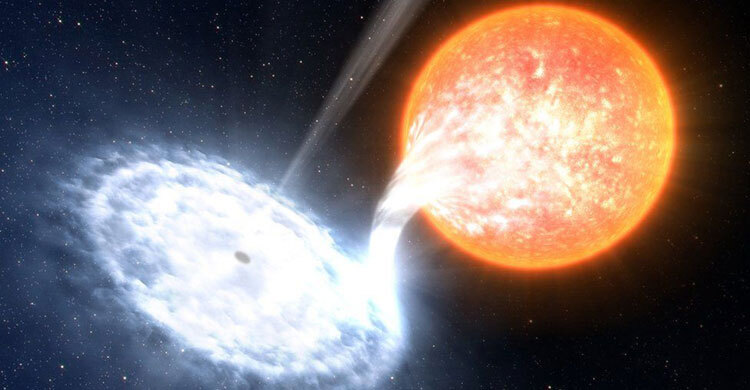Signs of first planet found outside our galaxy

Astronomers have found hints of what could be the first planet ever to be discovered outside our galaxy.
Nearly 5,000 "exoplanets" - worlds orbiting stars beyond our Sun - have been found so far, but all of these have been located within the Milky Way galaxy, reports BBC.
The possible planet signal discovered by Nasa's Chandra X-Ray Telescope is in the Messier 51 galaxy.
This is located some 28 million light-years away from the Milky Way.
This new result is based on transits, where the passage of a planet in front of a star blocks some of the star's light and yields a characteristic dip in brightness that can be detected by telescopes.
This general technique has already been used to find thousands of exoplanets.
Dr Rosanne Di Stefano and colleagues searched for dips in the brightness of X-rays received from a type of object known as an X-ray bright binary.
These objects typically contain a neutron star or black hole pulling in gas from a closely orbiting companion star. The material near the neutron star or black hole becomes superheated and glows at X-ray wavelengths.
Because the region producing bright X-rays is small, a planet passing in front of it could block most or all of the X-rays, making the transit easier to spot.
The team members used this technique to detect the exoplanet candidate in a binary system called M51-ULS-1.
"The method we developed and employed is the only presently implementable method to discover planetary systems in other galaxies," Dr Di Stefano, from the Harvard-Smithsonian Center for Astrophysics in Cambridge, US, told BBC News.
"It is a unique method, uniquely well-suited to finding planets around X-ray binaries at any distance from which we can measure a light curve."
Future planet-hunting
This binary contains a black hole or neutron star orbiting a companion star with a mass about 20 times that of the Sun. A neutron star is the collapsed core of what had once been a massive star.
The transit lasted about three hours, during which the X-ray emission decreased to zero. Based on this and other information, the astronomers estimate that the candidate planet would be around the size of Saturn, and orbit the neutron star or black hole at about twice the distance Saturn lies from the Sun.
Dr Di Stefano said the techniques that have been so successful for finding exoplanets in the Milky Way break down when observing other galaxies. This is partly because the great distances involved reduce the amount of light which reaches the telescope and also mean that many objects are crowded into a small space (as viewed from Earth), making it difficult to resolve individual stars.
With X-rays, she said, "there may be only several dozen sources spread out over the entire galaxy, so we can resolve them. In addition, a subset of these are so bright in X-rays that we can measure their light curves.
"Finally, the huge emission of X-rays comes from a small region that can be substantially or (as in our case) totally blocked by a passing planet."
The researchers freely admit that more data is needed to verify their interpretation.
One challenge is that the planet candidate's large orbit means it would not cross in front of its binary partner again for about 70 years, quashing any attempts to make a follow-up observation in the near-term.
One other possible explanation that the astronomers considered is that the dimming has been caused by a cloud of gas and dust passing in front of the X-ray source.
However, they think this is unlikely, because the characteristics of the event do not match up with the properties of a gas cloud.
"We know we are making an exciting and bold claim so we expect that other astronomers will look at it very carefully," said co-author Julia Berndtsson of Princeton University, New Jersey.
"We think we have a strong argument, and this process is how science works."
Dr Di Stefano said that the new generation of optical and infrared telescopes would not be able to compensate for the problems of crowding and dimness, so observations at X-ray wavelengths would likely remain the primary method for detecting planets in other galaxies.
However, she said a method known as microlensing might also hold promise for identifying extra-galactic planets.
The study has been published in the peer-reviewed journal Nature Astronomy.



